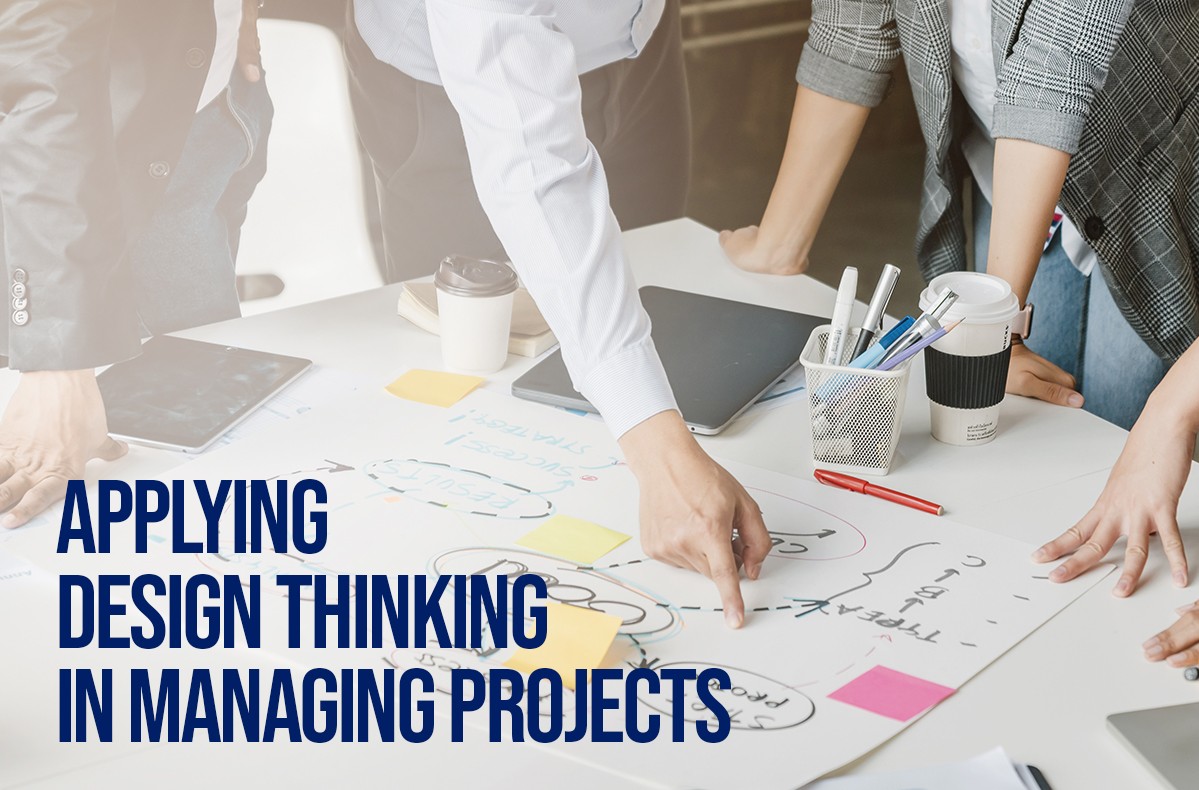
Key findings from a study of approximately 600 business and IT executives published by software development firm, Geneca, showed that only 55% of people involved in projects feel that the project’s business objectives are clear to them and that more than 80% feel the requirements do not articulate the needs of the business. As a Project Manager, I was curious to find if there was something else beyond the traditional project management toolset that I could leverage from in order to address this challenge.
I came across the concept of Design Thinking which is a human-centered approach to explore problems and solutions. The term Design Thinking is typically used in products and service design because it provides a framework to get clarity on a solution concept, describe how it works, and design the experience from a user’s perspective. When I learned about the various Design Thinking methods, I found that these can be applied to a number of project management use cases that could help to effectively manage projects and drive better outcomes.
This article introduces the ‘Double Diamond’ construct and the following 10 practical Design Thinking methods that supports the conduct of doing project management:
- Affinity Clustering
- Rose, Thorn, Bud
- User Journey Map
- Empathy Map
- Visualise the Vote
- Importance / Difficulty Matrix
- Concept Poster
- Round Robin
- Prototyping
- Think Aloud Testing
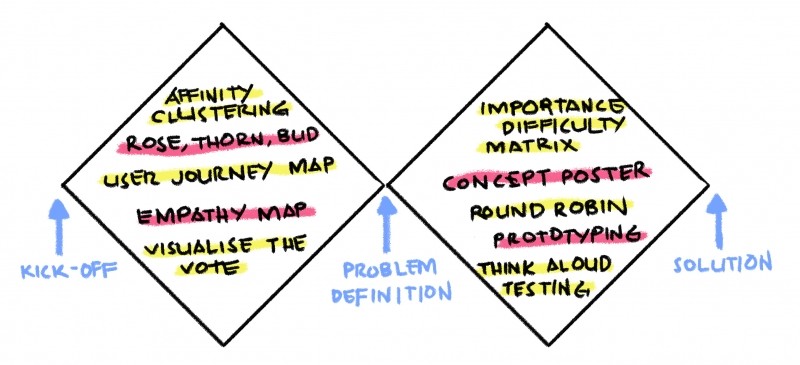
The Double Diamond is best described into two parts – the Left Diamond which is focused on exploring the problem and the Right Diamond which is aimed at coming up with the correct solution. In the context of managing projects, the Left Diamond is useful during planning and analysis to find the right problem to solve. Once the problem statement is clearly defined, the Right Diamond directs in the delivery in order to achieve the right results. Applying design thinking in managing projects involves the adoption of one or more combination of the methods that would be fit-for-purpose to a particular project use case.
Design Thinking Methods in the Left Diamond
When I’m in the early stages of a project doing requirements gathering, I will interview a number of stakeholders to get various inputs and then use a combination of any of the design thinking methods in the Left Diamond to make sense of what the new insights reveal. This will help me understand the problem I need to solve.
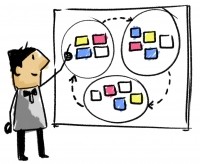 Affinity Clustering
Affinity Clustering
Affinity Clustering uses a visual diagram for sorting items according to similarity. These can be done using a physical whiteboard and sticky notes, or equivalent online tools that do similar things.
An Affinity diagram is useful in identifying common patterns across risks and issues, then illuminates the big ticket items that need to be prioritised. This clustering can be used to show dependencies across groupings which aids in root cause analysis, especially in determining the 20% most challenging themes which impacts the remaining 80%.
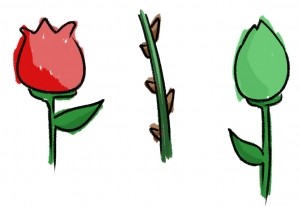 Rose, Thorn, Bud
Rose, Thorn, Bud
Rose, Thorn, Bud is a technique for identifying things as positive (rose), negative (thorn), or having potential (bud). Using pink, blue and green sticky notes to categorise inputs from interviews or meetings is quite handy to administer this.
Rose, Thorn, Bud can be used to support RAG (Red / Amber / Green) status reporting, identifying risks and issues, crafting lessons learned and project post-mortem for future reference, and prioritising initiatives using the MoSCoW (Must Have / Should Have / Could Have / Won’t Have) framework. Combining this method with Affinity Clustering allows further probing of major grouping of pain points from stakeholders in order to distil the ultimate problem statements and determine the severity.
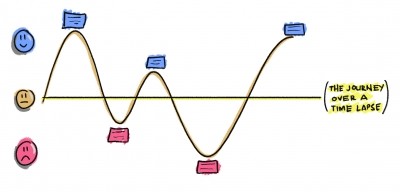 User Journey Map
User Journey Map
User Journey Mapping draws out a user’s experience step by step as they interact with a product or service. A basic way of doing this is tracking the highlights, neutral zones, and unhappy path across the various user touchpoints over an elapsed time period.
This technique enables a project manager to get into the mindset of the user and highlights pain points, identifying opportunities for consideration in building and strengthening a project’s business case. This visual is also useful in showing stakeholders an “As-Is” version as well as a desired target “To-be” future state.
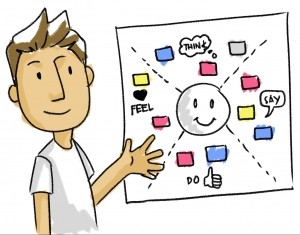 Empathy Map
Empathy Map
An Empathy Map is a collaborative visual used to capture a shared understanding of what is known about particular type of users and their needs. The tool articulates what we know about what the user thinks, what the user says, what the user does, and determine any misalignments because there could be instances where what people say is different to what they do. The ultimate aim is to connect with how people feel.
The Empathy Map can provide inputs in crafting the communication plan by taking into consideration a better understanding of a user behaviour. The tool can also help in creating an effective change agent network as part of change management.
Using the Empathy Map in conjunction with the User Journey Map helps a project manager influence the decision making of stakeholders by knowing and appealing to what’s important to them. This could support in preparing for steering committee discussions.
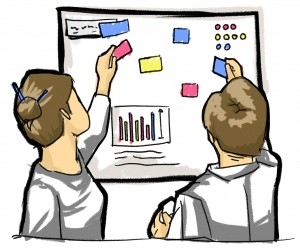 Visualise the Vote
Visualise the Vote
Visualize the Vote is a quick poll of participants to reveal opinions and preferences, usually administered by providing each person a sticky note to represent their vote. Everybody needs to place their vote all at the same time to avoid influencing each other prior to voting.
One advantage of this approach is it gives everybody an equal vote. This prevents decisions being influenced by the boss or people who are very vocal during meetings. Visualise the Vote helps establish group consensus to drive decisions such as in cases like requirement prioritisation, agreeing on the Definition of Done in Agile scrum delivery, and solution options selection leading to recommendation acceptance.
Design Thinking Methods in the Right Diamond
When I’m working on a later stage of a project where the problem statement is clear and the challenge is to find a solution, I work with my team and stakeholders to brainstorm ideas, then use a combination of any of the design thinking methods in the Right Diamond to get convergence that leads to an optimal solution.
Importance/Difficulty Matrix
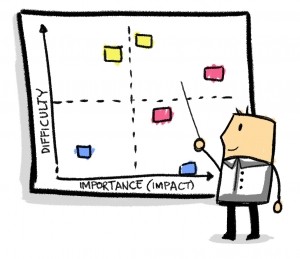
Doing this will ensure each item would fall within one of the 4 quadrants in the matrix: those in the upper right are strategic initiatives, those in the upper left are nice to have luxuries, those in the lower left are low hanging fruit quick wins, and those in the lower right are high value that should be top priorities.
This matrix can be used for prioritising a broad range of items such as project tasks, proposed solution options, change request assessments, and backlog refinement using the MoSCoW approach.
Concept Poster
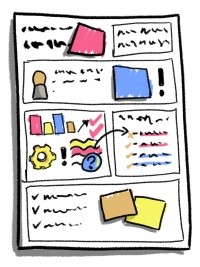 A Concept Poster is a communication tool to summarise and promote an idea which typically includes the name, a graphic depiction through images or sketches, and a timeline. It is used to show what the solution is, how it works, and why it matters with the aim of soliciting feedback and rallying for acceptance.
A Concept Poster is a communication tool to summarise and promote an idea which typically includes the name, a graphic depiction through images or sketches, and a timeline. It is used to show what the solution is, how it works, and why it matters with the aim of soliciting feedback and rallying for acceptance.
“A picture is worth a thousand words” as the saying goes. Using a Concept Poster to present solution options with recommendations for project issue resolution or risk mitigations is highly recommended. Using this to easily explain, test and get buy-in from users and stakeholders prior to a formal group decision-making session could increase the likelihood of adoption. The Concept Poster can also be used during onboarding to ensure everyone is on the same page and understands the project charter by receiving a simple, clear and consistent message.
Round Robin
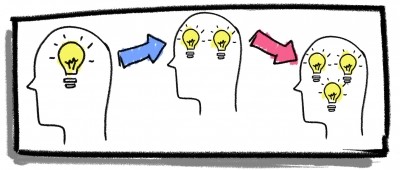 Round Robin is an activity where ideas evolve as they are passed from person to person, resulting to a collective group ownership. A typical format could be for Person A to generate a fresh idea then passes it to Person B who then makes improvements over the original idea. It gets reviewed by Person C who criticises the improved idea before handing it back to Person A to address the feedback points of the improved idea and make a final version.
Round Robin is an activity where ideas evolve as they are passed from person to person, resulting to a collective group ownership. A typical format could be for Person A to generate a fresh idea then passes it to Person B who then makes improvements over the original idea. It gets reviewed by Person C who criticises the improved idea before handing it back to Person A to address the feedback points of the improved idea and make a final version.
The round robin principle can be applied when developing solutions across multi-disciplinary teams such as an Agile scrum team. This approach can be adopted during iterative reviews of project deployment cutover run sheets as well as pair programming code reviews during development. This co-creation and group authorship technique can be used by a project manager when engaging with stakeholders to drive towards an agreed decision.
Prototyping
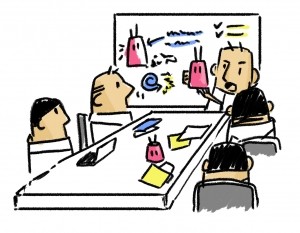 Prototyping involves rapidly creating a sample model approximation of a solution for the purpose of validation and testing. This has become commonplace in delivery projects through various formats like having proof-of-concepts, design wireframes, schematic blueprints, sandbox environments, conference room pilots, pilot control groups, sprint 0, mock conversions, and dress rehearsals.
Prototyping involves rapidly creating a sample model approximation of a solution for the purpose of validation and testing. This has become commonplace in delivery projects through various formats like having proof-of-concepts, design wireframes, schematic blueprints, sandbox environments, conference room pilots, pilot control groups, sprint 0, mock conversions, and dress rehearsals.
Prototyping is useful for having something tangible to work with as a result of progressing from its precursor design thinking methods such as Concept Poster or Round Robin. A low or high-fidelity prototype is then subject to trial testing in order to get early feedback from users and stakeholders, so that adjustments can be made sooner rather than later in the delivery chain as it becomes costlier to make corrections down the line. Prototyping is one of the ways project managers can mitigate risks.
Think Aloud Testing
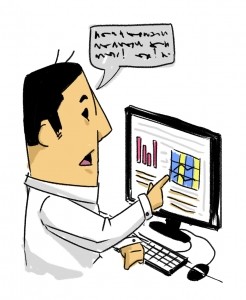 Think Aloud Testing is a method by which a person narrates their experience as they are performing a set of specified tasks, without any external prompts that could have otherwise influenced their behaviour.
Think Aloud Testing is a method by which a person narrates their experience as they are performing a set of specified tasks, without any external prompts that could have otherwise influenced their behaviour.
Using this testing format on prototypes surfaces any gaps in design and development as well as validates assumptions and hypothesis in the solution with respect to the expected user experience.
Think Aloud Testing is recommended for project managers to consider incorporating during user acceptance test planning in order to capture usability defects that may not be detected through a standard set of functional test scripts.
Summary
There is no one particular way of applying Design Thinking. Project managers are invited to discover how to mix and match a suite of methods across the Double Diamond that can be tailored to help traverse through an organised chaos that projects can be at the beginning. For those using Design Thinking for the first time, be cautioned on the initial level of resistance you would get from users and stakeholders. This behaviour is to be expected based on my experience. It is highly recommended to get involved in design thinking communities of practice that facilitates the exchange of lessons learned and best practices in dealing with the change management of adopting to this new way of working.
In order to overcome the key challenge of why projects fail, project managers would have to pivot towards a project management style that is user-centered, collaborative, empathetic, creative and playful. Welcome to the new breed of design thinking project managers.



